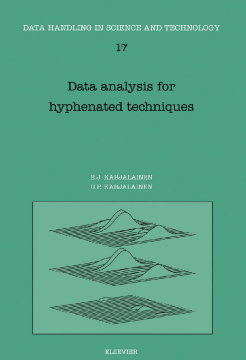
Additional Information
Book Details
Abstract
Based on a concrete set of working MATLAB programs, the book begins with a short program of snippets describing basic principles and proceeds to a complete application program filling a central analytical need: obtaining pure spectra from the observed overlapping spectra, with standard deviations for the
solutions obtained.
The strength of the book is the open nature of the programs. All programs can be read, tested and modified by the user. The mathematical principles needed for the proper treatment of experimental data are thoroughly described. The first part of the book describes how data is
collected, converted and prepared for the actual deconvolution. Practical working algorithms such as the Savitzky-Golay smoothing method are emphasized. The reader can see how searches in spectral libraries can be greatly speeded up by proper formulation of the calculation. Basic signal processing is described by illustrative examples.
The main part of the book describes the deconvolution of overlapping chromatographic peaks. Principle component analysis is described and used as a useful tool. The main emphasis is a discussion of a deconvolution method, OSCAR (Optimization by Stepwise Constraining of Alternating Regression), developed by the authors. The results can be validated as OSCAR calculates confidence intervals for the spectra and elution curves.
For users who do not want to enter the programs by hand a separate CD-ROM is available. It contains the programs and extensive sample data files. The CD-ROM has instructional multimedia showing step by step how the programs are used for the problems in the book. The MATLAB programs and data
files can be directly run on Windows® and Macintosh® computers having a MATLAB interpreter.
